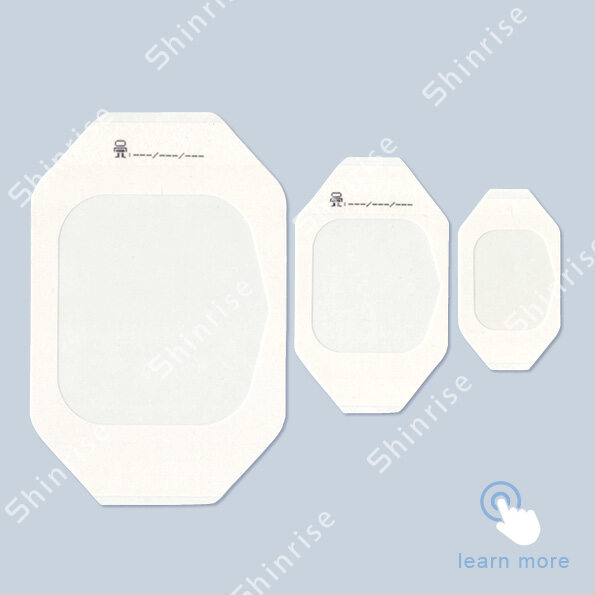Email cannot be empty
Password cannot be empty
Email format error
Email cannot be empty
Email already exists
6-20 characters(letters plus numbers only)
The password is inconsistent
Email format error
Email cannot be empty
Email does not exist
6-20 characters(letters plus numbers only)
The password is inconsistent


Semi-Permeable Film Wound Dressing: Innovation in Healing
Introduction: The Protective Shield of Modern Wound Care
When it comes to wound care, the dressing plays a pivotal role in the healing process. Enter semi-permeable film wound dressings, a breakthrough in medical technology that offers a superior alternative to traditional bandages. These innovative dressings provide an optimal environment for wounds to heal, promoting faster recovery and reducing the risk of infection. This blog explores the world of semi-permeable film wound dressings, delving into their unique properties, benefits, and how they are revolutionizing the field of wound care.
Understanding Semi-Permeable Film Wound Dressings
Semi-permeable film wound dressings are thin, flexible sheets made from a special polymer film that allows for selective exchange of gases and moisture. They are designed to:
Protect the Wound: Act as a barrier against bacteria and other contaminants.
Allow for Gas Exchange: Permit oxygen to reach the wound while releasing carbon dioxide.
Regulate Moisture: Maintain a moist environment that promotes healing without macerating the surrounding skin.
Key Features of Semi-Permeable Film Dressings
The effectiveness of semi-permeable film dressings is attributed to several key features:
Breathability: Allows the wound to breathe, reducing the risk of infection.
Adhesion: Securely sticks to the skin without causing damage upon removal.
Transparency: Provides a clear view of the wound, facilitating monitoring of healing progress.
Flexibility: Conforms to body contours, making it suitable for various wound locations.
Advantages Over Traditional Dressings
Semi-permeable film wound dressings offer several advantages over traditional gauze or adhesive bandages:
Reduced Risk of Infection: The barrier function minimizes bacterial colonization.
Pain Reduction: Gentle removal without adhering to the wound bed.
Cost-Effective: Often requires fewer changes, reducing overall treatment costs.
Patient Comfort: Provides a non-adhesive, soft, and comfortable covering.
Types of Semi-Permeable Film Dressings
Different types of semi-permeable film dressings cater to various wound types and healing stages:
Primary Dressings: Directly applied to the wound surface.
Secondary Dressings: Used in combination with other types of dressings for added protection or absorption.
Composite Dressings: Combine semi-permeable film with additional features like absorbent pads or hydrocolloids.
Clinical Applications of Semi-Permeable Film Dressings
Semi-permeable film wound dressings find use in a wide range of clinical settings:
Minor Wounds: Ideal for cuts, abrasions, and minor burns.
Surgical Incisions: Promotes healing and reduces the risk of post-operative complications.
Chronic Wounds: Effective in managing conditions like diabetic ulcers and pressure sores.
Burn Care: Helps in the treatment of partial-thickness burns by providing a protective barrier.
Integration with Advanced Wound Care Technologies
The integration of semi-permeable film dressings with advanced wound care technologies is enhancing their efficacy:
Negative Pressure Wound Therapy (NPWT): Used in conjunction with NPWT to provide a seal around the wound.
Wound Monitoring Systems: Some dressings incorporate sensors to monitor wound conditions remotely.
Antimicrobial Coatings: Some films are treated with antimicrobial agents to further reduce infection risk.
The Future of Semi-Permeable Film Wound Dressings
As research and development in wound care continues, the future of semi-permeable film dressings looks promising:
Customizability: Dressings that can be tailored to individual patient needs.
Smart Dressings: Incorporating biosensors for real-time monitoring of wound healing.
Biodegradable Materials: Eco-friendly options that reduce the environmental impact.
Conclusion: The Healing Touch of Semi-Permeable Film Dressings
Semi-permeable film wound dressings represent a significant leap forward in the field of wound care, offering patients a more comfortable, effective, and convenient treatment option. As technology continues to evolve, these dressings will only become more sophisticated, further improving patient outcomes and setting new standards in wound management.

